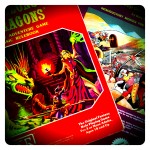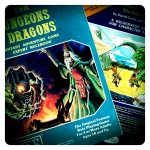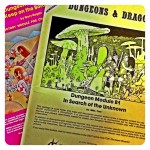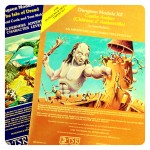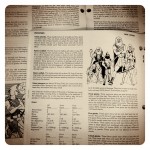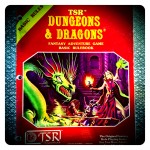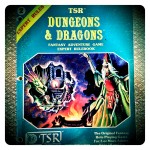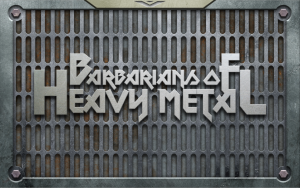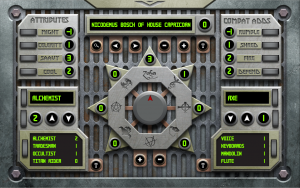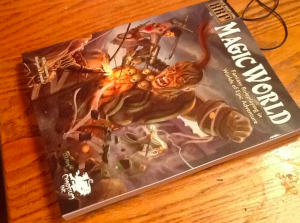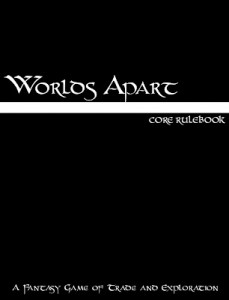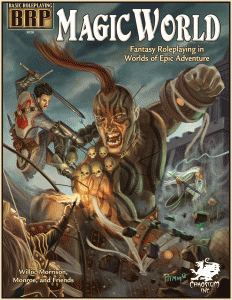At this point, I’ve finished with the rules for character creation and the use of music in the game and have started working on the vehicle and Titan rules. Another thing I’m doing as I go along is filling out the details on the various schools of rock.
Now, you may wonder why I haven’t finished that before moving on to another part of the rules-set and the reason is simple: basically there are a metric butt-tonne of ability lists to fill out. I have to define 11 levels for each Style’s Sonic Wzardry Effects, which means 88 separate Effects spread between 8 schools of rock.And then I also have to fill out the various Licks available to specific schools, and those add another 40 sub-effects that may or may not be based on the Sonic Wizardry Effects.
That takes time and you should never try to tackle a job like that all at once. Best to come back to it a bit at a time as you are inspired and in between working on all the other stuff that needs doing as well. Not only is it less maddening, but working on other rules can often inspire an idea that will grow the lists as you go while still maintaining forward momentum in other areas, and all while keeping the thematic and mechanical elements holistically connected. This is a much more effective use of time than simply staring at a screen and straining your brain for ideas to finish lists in one go while other bits of mechanics need finishing.
All that said, I have completed one of the schools and thought I’d post it up today to give folks a look at how a fleshed out section of the Rocktagon looks, mechanically speaking. There will be additional verbiage, thematic information and so on, added later as the book is finished, but for now, here are the rules for the Dedite School of Rock and their favored sonic style: Fire…
DEDITE
Characteristic Bonus: Fire +1
Special Career: Sonic Slayer
HARMONICS
Harmonic Number – 4
Domination: The current roll is pushed up one Level of Success.
Killing is My Business (and Business is Good): Double the total damage caused by the current roll OR ignore the target’s armor.
The Four Horsemen: The Dedite and up to 3 Band-Mates gain a Bonus Die on all actions related to Combat (including strategy and tactics) and intimidation for the rest of the Scene.
DISCORDS
Discord Number – 8
RagNaRok: For the rest of this scene, any benefit the Dedite gains from striking a Harmonic is also given to one of their enemies for their next roll.
War Nerve: If the Dedite is in combat when this Discord is struck, the pressures of combat trips their bloodlust into overdrive and they attack with nor regard to their own safety. Their Defend Score is reduced to -2 for the rest of the Scene.
Ride The Lightning: The Dedite pours too much power into their instrument and reaps a vicious energy backlash from the feedback. If using a Sonic Weapon with the Safeties Off, the Dedite takes D6+3 damage.
LICKS
Axe – Rapid Fire: The guitarist may use their sonic amplifier to shoot a hail of flaming bolts at the enemy. This gives them a Rapid Fire rating equal to their Rank in Dedite.
Bass – The Fallen Angel: When used by the Frontman to create the Heat Shield Effect, it will last a number of Rounds equal to 3x the Decay rating after the bassist ceases to maintain it.
Percussion – Hot and Heavy: When used by the Frontman, any Sonic wizardry Effects gain one free bump in Intensity, Damage or Area of Effect.
Vocal – Tears of Fire: When used by the Frontman to create The Sky is On Fire Effect, tiny drops of flame start to rain down from the sky, affecting a number of Titan Hexes equal to the singer’s Dedite Rank. Everything within those hexes takes a hit from an Intensity 1 flame each turn. Cover may negate this effect, so long as the cover itself doesn’t catch on fire…
Other – All Guns Blazing: When using the Fire of Unknown Origin Effect, all ballistic weapons within D6 Personal Hexes of the player gain a +1 flame damage and all Flame weapons roll a Bonus Die for damage.
FIRE EFFECTS
Fire in BoHM is measured in Area of Effect and Intensity (see pg.xx). Enhancing Fire Effects doubles the Radius and adds +1 to the Intensity or Damage for each Rank added to the Effect.
0 – Turn Up the Heat
The headbanger can raise the surrounding temperature (a number of Personal Hexes equal to the roll total) to an extremely uncomfortable level, enough to melt ice quickly and cause extreme dehydration and fatigue (see pg.xx), but not enough to boil liquids or to start fires.
1 – Flames Rising
The headbanger can increase the power of existing flame. Each successful use of this Effect doubles the Area of Effect or Intensity of the fire.
2 – Fight Fire with Fire
The previous level of Fire Mastery can only grow or maintain flames. At Rank 2, the heabanger learns to reduce or eliminate them. They may reduce any fire in Intensity or Area of Effect by 1 using this Effect.
3 – Bat Out of Hell
The headbanger can now exert fine control over existing flames, shaping them into animated avatars of flame that move and dance around at their whim as long as they continue to maintain the Effect. The flames may move a number of Personal Hexes per Round equal to the headbanger’s base Dedite Style Rating.
4 – Fire of Unknown Origin
The player may now ignite flammable materials spontaneously, creating a fire of Intensity 1 with a Radius of 1 Personal Hex. The fire will burn as long as it has fuel or for D6 x Decay in Rounds after the player has ceased maintaining it.
If used to light a close combat weapon on fire, add a damage modifier to any attacks using it equal to the Intensity of the flame. You can also do this with feet and fists, but combustible weapons and body parts will take damage every round this Effect is in action. In these cases it’s best to combine it with Hellion, below.
5 -Hellion
The headbanger hardens a single target’s resistance to flame, lowering the Intensity of any fire attacks by 1 for damage purposes. This Effect lasts for D6 x Decay in Rounds after the player stops maintaining it.
6 – Heat Shield
A wall of pure unadulterated heat rises up to melt and diffuse incoming attacks. This Effect will protect one Personal Hex along one side from attacks. this provides a +6 Cover bonus to DEF against all personal attacks that pass through the shielded hexside.
7 – Great Balls of Fire
The headbanger can use the Sonic Amplifier on their instrument to shoot balls of exploding flame at their enemies.
The player fires a number of balls equal to the their Ranks in Dedite, each of which may be aimed at a separate target hex. Each ball has a range in Personal Hexes equal to the player’s Ranks in Dedite x5 and causes D6+5 damage to everything in the target Hex. Individual victims may reduce the damage they suffer by their Defense (including cover).
8 – Firehouse
This Effect can be used to set an entire Titan Hex aflame with temperatures hot enough to melt iron. Just being in the area causes 2D6+6 damage to unprotected living creatures each round.
Any enclosed vehicle that traverses the terrain, like a tank or Titan, gains D6 points of Heat.
9 – Quest for Fire
A giant pillar of flame erupts from a Personal Hex of the player’s choice and shoots 1km up into the night sky. This acts as a beacon and all who see it must pass a Saavy + Nazarite or Ledite roll to avoid being drawn towards it by a long forgotten primal attraction to flame.
Those drawn in this manner will immediately break free of the spell once they are within 10 Personal Hexes of the Effect, or if they are attacked before they get that far.
10 – Heavy Metal Fire
The band sets an entire Titan Hex on fire and the flames created are hot enough to melt the armor of Titans and pretty much vaporize any living being. Titans and vehicles passing through this hex takes D6 hits to each location and 2D6 Heat. Titans and vehicles in the surrounding hexes take D6 Heat.
11 – The Sky is on Fire
The band sets a thin layer of atmosphere above the battlefield, an entire Aerospace Hex worth, on fire. This blocks visibility to the ground and forces and vehicles in that hex or passing through it immediately take D6 hits to each location. Any ordinance travelling through the flame is automatically detonated.
Temperatures under this umbrella of flame soar, causing the same effects as Turn Up the Heat above, and it is impossible to see through it from above or below. Titans and other vehicles gain 1 additional point of heat each turn they are in the hex.

